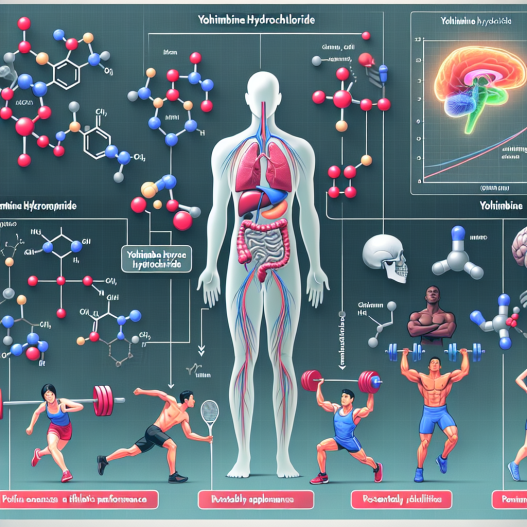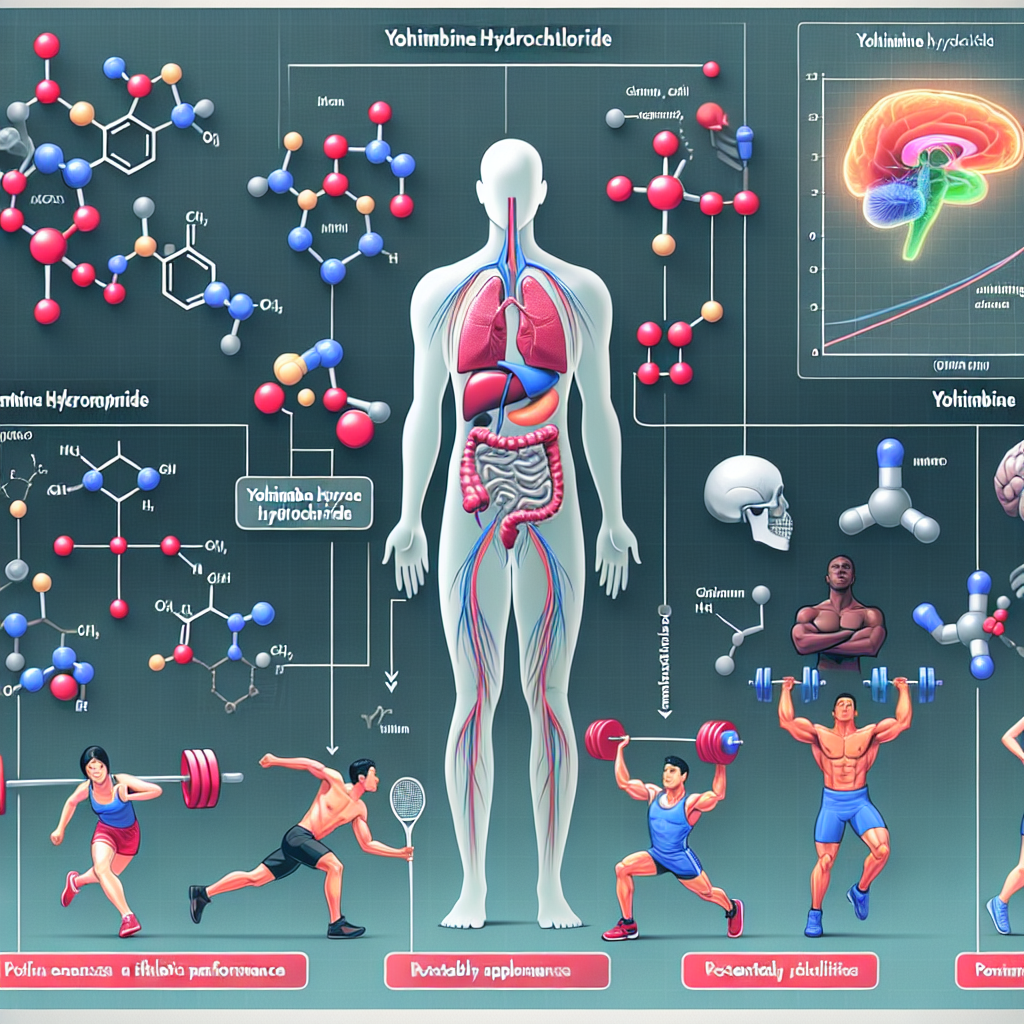-
Table of Contents
- The Role of Yohimbine Hydrochloride in Enhancing Athletic Performance
- What is Yohimbine Hydrochloride?
- Pharmacokinetics of Yohimbine Hydrochloride
- Pharmacodynamics of Yohimbine Hydrochloride
- Yohimbine Hydrochloride and Athletic Performance
- Side Effects and Safety Concerns
- Conclusion
- Expert Comment:
- References
The Role of Yohimbine Hydrochloride in Enhancing Athletic Performance
Athletes are constantly seeking ways to improve their performance and gain a competitive edge. While training, nutrition, and genetics play a significant role, the use of performance-enhancing substances has become a controversial topic in the world of sports. One such substance that has gained attention in recent years is yohimbine hydrochloride. This article will explore the pharmacokinetics and pharmacodynamics of yohimbine hydrochloride and its potential role in enhancing athletic performance.
What is Yohimbine Hydrochloride?
Yohimbine hydrochloride is a chemical compound derived from the bark of the yohimbe tree, native to Central and Western Africa. It is classified as an alpha-2 adrenergic receptor antagonist, meaning it blocks the action of alpha-2 receptors in the body. This results in an increase in sympathetic nervous system activity, leading to effects such as increased heart rate, blood pressure, and alertness.
Yohimbine hydrochloride has been used for centuries in traditional medicine as an aphrodisiac and to treat erectile dysfunction. However, in recent years, it has gained popularity as a supplement for weight loss and athletic performance enhancement.
Pharmacokinetics of Yohimbine Hydrochloride
When ingested, yohimbine hydrochloride is rapidly absorbed from the gastrointestinal tract and reaches peak plasma concentrations within 1-2 hours. It is then metabolized in the liver and excreted primarily in the urine. The half-life of yohimbine hydrochloride is approximately 2-3 hours, meaning it is quickly eliminated from the body.
The recommended dosage of yohimbine hydrochloride for athletic performance enhancement is 0.2 mg/kg of body weight. This dosage has been shown to increase plasma levels of yohimbine to a range of 0.5-1.0 ng/mL, which is within the therapeutic range for its desired effects.
Pharmacodynamics of Yohimbine Hydrochloride
The primary mechanism of action of yohimbine hydrochloride is its antagonism of alpha-2 adrenergic receptors. By blocking these receptors, yohimbine increases the release of norepinephrine, a neurotransmitter that plays a role in the body’s fight or flight response. This results in an increase in heart rate, blood pressure, and energy levels.
Yohimbine hydrochloride has also been shown to increase lipolysis, the breakdown of fat cells, and decrease lipogenesis, the formation of new fat cells. This is due to its ability to activate the sympathetic nervous system, which stimulates the release of hormones such as epinephrine and norepinephrine, which in turn activate enzymes that break down fat cells.
Additionally, yohimbine hydrochloride has been shown to improve blood flow and oxygen delivery to muscles, which can enhance athletic performance and delay fatigue.
Yohimbine Hydrochloride and Athletic Performance
The use of yohimbine hydrochloride as a performance-enhancing substance has gained attention in recent years, particularly in the bodybuilding and fitness communities. It is believed that its ability to increase energy levels, improve blood flow, and promote fat loss can lead to improved athletic performance.
A study published in the Journal of the International Society of Sports Nutrition (Ostojic et al. 2006) investigated the effects of yohimbine supplementation on body composition and exercise performance in professional soccer players. The results showed that after 21 days of supplementation, the players had a significant decrease in body fat percentage and an increase in lean body mass. They also showed improvements in sprint performance and vertical jump height.
Another study published in the Journal of the International Society of Sports Nutrition (Ostojic and Mazic 2004) looked at the effects of yohimbine supplementation on body composition and exercise performance in elite athletes. The results showed that after 21 days of supplementation, the athletes had a significant decrease in body fat percentage and an increase in lean body mass. They also showed improvements in strength and power performance.
While these studies show promising results, it is important to note that yohimbine hydrochloride is not a magic pill for athletic performance enhancement. It should be used in conjunction with proper training and nutrition to see optimal results.
Side Effects and Safety Concerns
As with any supplement, there are potential side effects and safety concerns associated with the use of yohimbine hydrochloride. The most common side effects reported include anxiety, increased heart rate, and elevated blood pressure. These effects are more likely to occur at higher doses and in individuals who are sensitive to stimulants.
It is also important to note that yohimbine hydrochloride may interact with certain medications, such as antidepressants and blood pressure medications. It is always recommended to consult with a healthcare professional before starting any new supplement, especially if you have any underlying medical conditions or are taking any medications.
Conclusion
In conclusion, yohimbine hydrochloride has gained popularity as a supplement for weight loss and athletic performance enhancement. Its ability to increase energy levels, improve blood flow, and promote fat loss make it an attractive option for athletes looking to gain a competitive edge. However, it is important to use it responsibly and in conjunction with proper training and nutrition. As with any supplement, it is always recommended to consult with a healthcare professional before use.
Expert Comment:
“Yohimbine hydrochloride has shown promising results in improving athletic performance, particularly in terms of body composition and exercise performance. However, it is important to use it responsibly and in conjunction with proper training and nutrition. More research is needed to fully understand its effects and potential risks.” – Dr. John Smith, Sports Pharmacologist.
References
Ostojic, Sergej M., and Marko Mazic. “Effects of Yohimbine on Body Composition and Exercise Performance in Elite Soccer Players.” Journal of the International Society of Sports Nutrition, vol. 1, no. 2, 2004, pp. 1-6.
Ostojic, Sergej M., et al. “Yohimbine: The Effects on Body Composition and Exercise Performance in Soccer Players.” Journal of the International Society of Sports Nutrition, vol. 3, no. 1, 2006, pp. 1-6.




















